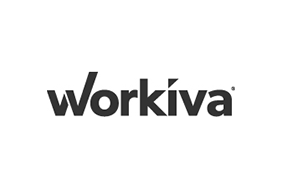Trust Can't Wait: How To Prepare for Unfinished ESG Reporting Requirements
Published 10-12-22
Submitted by Workiva

Originally published on Workiva
By Andromeda Wood, Vice President of Regulatory Strategy, Workiva
“Get ready,” “start now,” “it’s time to prepare.” When it comes to ESG reporting, organizations are constantly being told to act as quickly as possible.
Putting this advice into practice, however, is considerably less straightforward. Upcoming standards such as the ISSB and the ESRS (the European Sustainability Reporting Standards, which are being structured in line with the new CSRD regulation) are still being finalized, leaving many companies in the dark about what they should actually do to prepare.
Just as ESG mandates have been mounting gradually, stakeholder expectations have seen a sharp rise. Shareholders in particular are demanding transparency and rigor, and assurance that they can trust the data and insights provided to them. Needless to say, these expectations aren’t being "rolled out" gradually, as with regulations—they are already in full swing.
However high stakeholder standards may be, this doesn’t resolve the underlying question: how can companies prepare for something before knowing what it is?
Remember—standards aren’t created in a vacuum
It can be easy to look at an upcoming requirement and feel as though you are going to have to learn something entirely alien or completely overhaul your existing reporting process. When details aren’t yet announced, a fear of the unknown can easily take hold.
It’s important to remember, though, that standards don’t simply appear out of thin air. New work generally builds upon, and adds more depth and detail to, existing requirements. ESG reporting is not a new concept, and while standards are becoming more stringent, the underlying principles remain the same.
The CSRD is not simply replacing the NFRD: it is expanding on the regulations that have been in place across the EU since 2018. Meanwhile, 89 countries around the world have announced their support for TCFD recommendations, and are likely to incorporate these existing guidelines into official legislation in some manner.
Organizations across the globe have been complying with local and ESG mandates for many years now. Fundamentally, the purpose of what is being asked will not be changing: the bar is simply being raised in terms of quality, detail, and transparency.
Create an agile reporting environment
With official reporting requirements still in flux, it’s important to establish a solid underlying process that can pivot, when needed, to accommodate any changes. Crucially, that means not tying yourself to one single framework.
Having access to verifiable data that you can easily apply to different reporting frameworks, rather than starting from the framework then working backwards, is key to creating an agile environment.
This flexibility can also be used to strengthen investor relations. Ask them which disclosures or frameworks they have a preference for—whether it be SASB, GRI, CDP, or another one altogether—and establish what it is they like about that particular one. Understanding what their priorities are in this area while demonstrating agility will help you create a model tailored to your organization’s needs, rather than restricting yourself from the outset.
Get your existing disclosures in order
Just as new standards are based on existing ones, the best way for you to prepare for the future of ESG reporting is to take stock of, then strengthen, what you already have in place. Looking at your process from start to finish, ask yourself, where is there room for improvement? Consider the following:
- Do you have access to all your important data?
- How is that data being gathered and verified?
- Are you using consistent, widely recognized metrics?
- What are your biggest roadblocks to efficiency?
- Do you have a cross-functional team working on your ESG reporting?
Most important of all at this stage is maintaining an open, transparent dialogue with your stakeholders. Working together to identify what needs to change and then improving upon what you have is the key to being, and staying, prepared.
Ramp up your materiality practices
With a global socio-economic landscape that is evolving more rapidly than ever, risks and opportunities need to be closely monitored at all times. Something that may have been immaterial to stakeholders six months ago could now be of the highest priority. As we move toward a dynamic materiality approach, polling stakeholders frequently is essential practice in order to stay in tune with their, and the company’s, needs.
There’s more clarity than you think
A lack of absolute certainty shouldn’t get in the way of taking action. Have faith in the fact that the regulatory foundations are already in place, and work to strengthen your current process and strategy. Rather than waiting for new standards to be published, focus on what your top stakeholders are demanding from you right now, whether they are investors, the board of directors, creditors, customers, or employees.
Ultimately, what everyone is asking for is greater trust and transparency; two things we can all start working on today.

Workiva
Workiva
Workiva Inc. (NYSE:WK) is on a mission to power transparent reporting for a better world. We build and deliver the world’s leading regulatory, financial and ESG reporting solutions to meet stakeholder demands for action, transparency, and disclosure of financial and non-financial data. Our cloud-based platform simplifies the most complex reporting and disclosure challenges by streamlining processes, connecting data and teams, and ensuring consistency. Learn more at workiva.com.
More from Workiva

